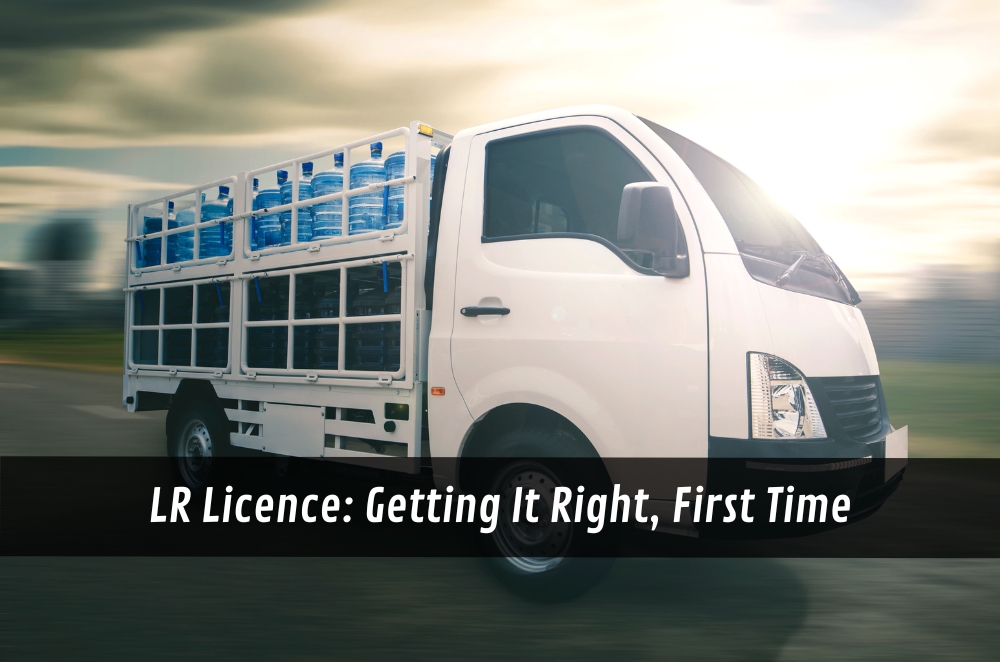Getting an LR licence isn’t just a box to tick; it’s the start of handling vehicles with real responsibility and bigger margins for error. We take a practical view of training: clear standards, no fluff, and plenty of time behind the wheel. Simple aims are to secure control, make measured judgments, and maintain confidence when the road throws up the unexpected. Rules matter, but mindset is more important. Good coaches establish habits that stick by correcting, repeating, and building rather than cramming. When rising from a car, the leap might be rather significant. With the correct strategy, it stops being difficult and becomes doable, repeatable, and really beneficial day after day. Everywhere.
What is an LR licence and who needs it?
An LR licence covers light rigid vehicles and suits drivers stepping into small buses or light trucks. It’s designed for people moving up from car class who want added capacity without jumping straight to heavy rigid.
Beyond the formalities, it’s a statement that you can manage extra mass, longer wheelbases, and passenger comfort without straining. That means pre-start checks, defect reporting, and smooth low-speed work around tight kerbs. The real gain is judgment: planning gaps earlier, reading traffic a block ahead, and braking like you’ve got standing passengers. If you’re building a routine, map out sessions by skill rather than time. Anchor each day to one priority — mirrors, cornering lines, or progressive braking — and repeat until it sticks.
How do you prepare for the LR assessment?
Start with repeatable routines: cabin set-up, mirror discipline, smooth throttle and brake, then back it with hazard scanning. Assessors reward calm, predictable inputs over speed.
Build confidence by rehearsing the exact sequences you’ll use on test day. Pair mirror checks with triggers, call out each step, and treat every manoeuvre like muscle memory. Small wins compound: a settled stop, a clean left sweep, a lane change that feels unhurried.
• Practise hill starts with mirror triggers
• Nail mirror–signal–brake–gear timing
• Rehearse tight turns without kerb strikes
• Use progressive braking to a smooth stop
Which training approach builds confidence fastest?
Short theory bursts followed by immediate seat time are most effective. Measure progress in laps, not hours; sessions should concentrate on one or two talents.
Feedback has to be given precisely and immediately. Stop following a mistake, diagnose it, and re-run the same turn with one modification—earlier brake, slower hands, tighter line. Scorecards help: did mirrors move before the indicator, did the bus stay inside lines, did the stop feel passenger-friendly?
• Short drills with tight goals
• Specific feedback after each lap
• One-skill focus per session
• Finish with a calm consolidation run
What mistakes slow learners down?
Rushing, avoiding basics, and chasing shortcuts. Oversteering, late braking, and bad mirrors are signs of erratic routines, not talent gaps.
If you’re clipping kerbs, you’re turning late or too fast; fix the entry speed and the reference points.Tie checks to lane changes, crossroads, and 100-meter scans if mirrors seem like a distraction. You are not timing them. Make notes, maintain practice, and allow habits do the bulk of the work. Keep notes, keep practice tight, and let habits do the heavy lifting.
Conclusion: The upgrade rewards patience and repetition. Build routines that hold under pressure, track your gains, and choose training that treats smooth, deliberate control as the standard. If you’re weighing options, this perspective on choosing an LR licence provider can sharpen decision-making at the end of your search.





Comments